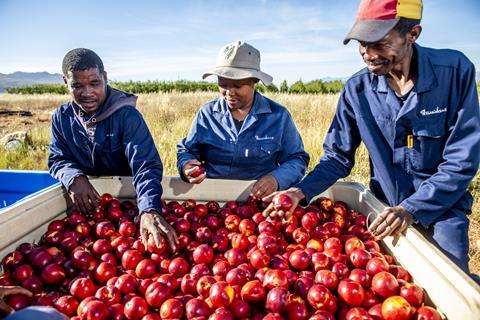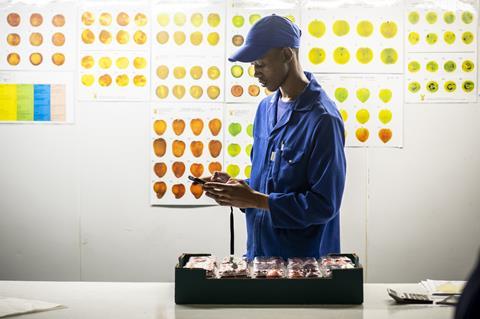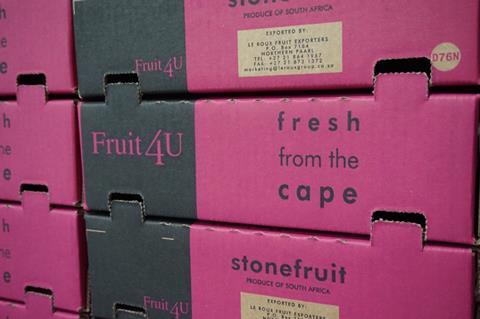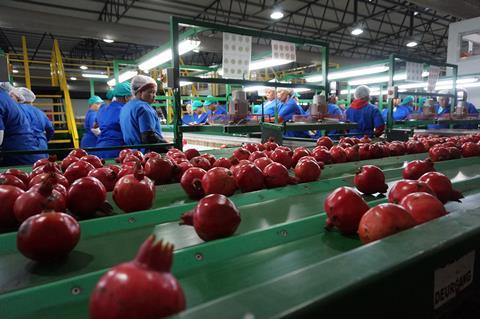The country’s fruit exporters are more confident this year as production continues to grow, but they must continue to pay attention to potential supply chain disruptions

South Africa is one of the global fruit industry’s stalwarts when it comes to production and exports. The country has been through many significant changes over the years, although the era of deregulation in the late 1990s seems a long time ago now. Some of the changes seen since then have been specific to South Africa, but a number of have also affected producers and exporters in other parts of the world as well.
As 2025 gets underway, it does appear that a wave of optimism and confidence is sweeping across South Africa’s fruit business. With new plantings and new export markets emerging, exporters continue to look to diversify away from the UK and Europe into Asia and the Middle East, as well as other African markets. And they are facing up to some big challenges.
Producers, in our experience, only support these types of investments when they feel confident about the future. South Africa’s growers and exporters, in this respect, are no different to others around the world.

Supply chain shocks
Over the last few years, global demand and trade in produce have been hit hard by a series of interrelated factors. These have required all producers and exporters, including those in South Africa, to have something of a rethink as to where they see their key markets and customers being in the future. Much of this has been driven by the ongoing after effects of the Covid pandemic, disruption to the operation of physical supply chains, the impact of climate patterns, and changes to consumer behaviour.
But to some extent, the international fruit sector has always had these sorts of supply chain shocks. It had to endure the global financial crisis, for example. There have been issues with transport logistics, especially in the Suez Canal. And there has been opposition among consumers and politicians to the adoption of new agrifood technology – especially in Europe, but maybe less so in other parts of the world.
There have also been wider geopolitical tensions, not least between the US and China. For South Africa, these have created issues around international trade and knock-on impacts across south-east Asia, in particular where it has strong market aspirations for the future.
The recent re-election of President Trump will almost certainly see further economic and trade tension between China and the US. The effects of this will ricochet around the world. And the situation in the Middle East still remains tense. South Africa will not be immune to these challenges.
A promising outlook
As an example of the optimism that abounds in South Africa, the country’s apple, pear and stonefruit industry body Hortgro expects more of those products to be shipped overseas in 2025, with a 5 per cent forecast increase in volume on the previous year. This is due to increased production from recently planted orchards, higher yielding varieties, better weather conditions, and a recovery from hail and flood damage that occurred in 2023.
In 2024, South Africa’s stonefruit industry launched a new marketing campaign in the UK aimed at increasing the visibility of its products among consumers, and restoring trade confidence in the country as a primary Southern Hemisphere source.
South African lemon production, meanwhile, is forecast to rise 10 per cent thanks to new investments in irrigation and greater financial input from producers. And soft citrus production is forecast to increase by 4 per cent. Duty-free citrus exports under the African Growth Opportunity Act are expected to sustain recent strong growth in the US, which is considered a premium market.

Has South Africa turned a logistical corner?
Export logistics have been a particular challenge for South Africa’s fruit trade in the past few years – especially after the disruption caused by Covid – due to underperforming rail infrastructure, road quality concerns, port inefficiencies, disruptions from weather, and other geopolitical factors.
But despite these various constraints, new investments in coldstorage and rail infrastructure will reportedly lead to much-needed improvements in the near future. Addressing long-running concerns, state-owned operator Transnet has begun to replace and refurbish equipment and machinery at Cape Town, improve contracting maintenance and related services, and employ additional staff. Things might not be perfect yet in this respect, but they are starting to look a lot better.
The need for this investment is clear, not least because a significant number of new fruit orchards have been planted across Southern Africa in recent years. At some point, these will mean a significant increase in production and exports.
Addressing supply chain shocks
It can be hard to know where to start when it comes to dealing with volatile market conditions and unpredictable supply chain shocks. What we do know for certain though is there are probably more supply chain shocks on the way for South Africa and other suppliers. History tells us that.
We have often found that, rather than try to predict specific events, a useful starting point can be to ask this question of all parts of the business – production, processing, R&D, innovation, HR and legal, marketing, procurement, finance and so on: “What’s the worst thing that can happen and, if it did, what would we do?” Done well, this can help businesses mitigate against what might be seen as the worst of the worst. This is a huge challenge.

Great produce is not enough
All the leading international producers and exporters, such as the US, China, Turkey, Brazil, India, Chile, Peru, the Netherlands, Spain, and Thailand, have excellent fruit to trade. The ‘best of the best’ in these countries already operate to a high technical standard. South Africa needs to be able to match them across a wide range of supply chain factors. And when the country is at its best, it often can.
Besides having great produce to sell, however, what is also now required is a very high level of market understanding, and the development of a clear, yet flexible strategy. Suppliers need to consider economics, customers, and supply chains, as well as factors such as climate change and the environment too.
In South Africa and elsewhere, those countries and businesses with great data and market insight, as well as great produce, will be the winners in future.



